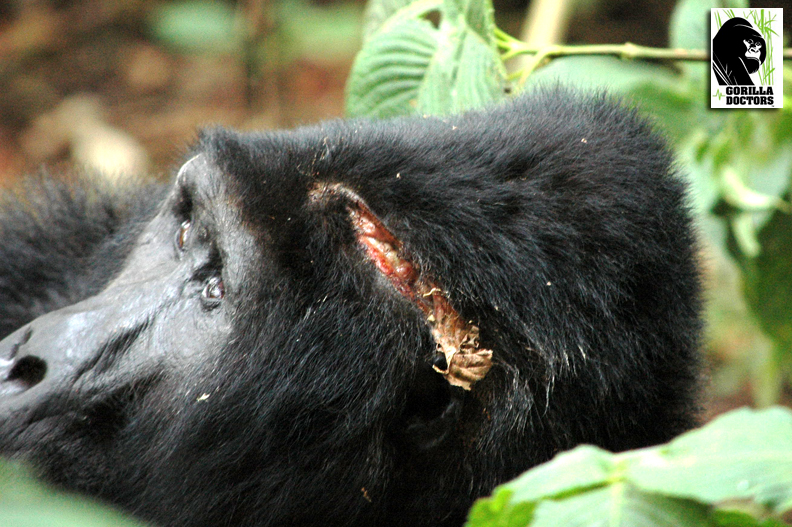Intra-Group Fight In Bwindi’s Bweza Group Leaves Silverbacks Injured
By Gorilla Doctors Staff on Wednesday, August 2nd, 2017 in Blog.When powerful silverbacks jostle for dominance within a group, they can sustain some pretty serious injuries. Over the last thirty years, Gorilla Doctors field veterinarians have watched these impressive males make miraculous recoveries, many times without the need of veterinary intervention. After an interaction, if any gorillas are wounded, our field vets will return to the group again and again to assess the injuries, deliver medical treatment if necessary, and ensure the gorillas recover fully.
This month, an intra-group interaction between silverbacks Kakono and Rurehuka in Bwindi’s Bweza group occurred. The interaction left dominant silverback Kakono with two wounds on his head and second ranking silverback Rurehuka with superficial wounds on his back. Dr. Fred first trekked to the group with UWA rangers to assess the silverbacks’ wounds on July 14th and found the 10 members of the group calmly feeding on Mimulopsis and tree ferns in the Bubare area of the park. It was a cold, clear morning in Bwindi and the silverbacks fed from the ground while the other group members took to the trees.
Even with subordinate silverbacks recently challenging his dominance, Dr. Fred reports that the group leader, silverback Kakono, was fully in charge of the group. Second ranking silverback Rurehka and young silverback Mucunguzi attempted to move close to the three females of the group during Dr. Fred’s observation, sparking bouts of loud vocalizations while they chased one another away. Meanwhile, blackback Tindatine stayed on the periphery of the group, avoiding the fray.
During Dr. Fred’s initial assessment following the intervention, dominant silverback Kakono had two large wounds on his head, one on his shoulder and one on his left wrist. All of his wounds were clean and showing signs of healing, though the more serious laceration on his head would require further assessment. Rurehuka’s wound on his back was small and already showing signs of healing.
Dr. Fred returned to the group four days later to check on Kakono’s head wound. The silverback was resting with adult female Mwiza, her baby and subadult Banshekuye. The group was calm and quietly feeding in the cold mountain air. Kakono’s head wound stretched from his forehead to his left ear. Though there was some discharge from the wound, there was no necrotic tissue forming. The silverback was strong and actively feeding so Dr. Fred decided to give Kakomo further time to heal. If the wound showed further signs of infection, he would intervene with antibiotics to help.
Fortunately, Dr. Benard, Gorilla Doctors Head Field Vet in Uganda, sent over a report that Kakono’s wound has continued to heal without veterinary treatment; the strong silverback continues to take charge of his group despite attempts made by the other silverbacks to overthrow his leadership.


 Donate
Donate

